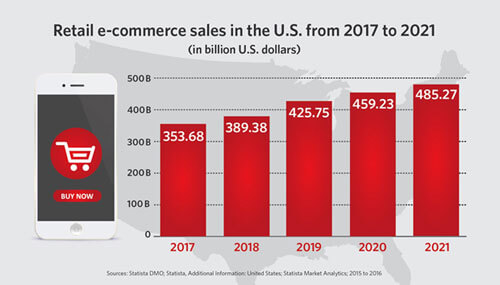Entrepreneur Insight
Flower Girl Dress for Less: E-commerce Strategy of the Future
By Daisy Lin
Seeing ahead of technology trends was key to the success of this e-commerce business.
Before Amazon turned a profit, Belinda and Sasson Sarooei saw the potential of e-commerce. It was 1999, and the couple decided to launch an online business selling flower girl dresses at a discount.
“People laughed at me when we first started the business,” says Belinda Sarooei, CEO of Flower Girl Dress for Less. “They never heard of anything like this.”
Belinda Sarooei was working as a buyer of women’s clothing for Federated Department Stores, now known as Macy’s, Inc. She always dreamed of working with kid’s clothes but was told she would never be able to make money doing it. Then she met her husband, a marketer and software architect, who encouraged her to make a go of it on the web.
“We saw the internet growing by leaps and bounds from day one. It was clear to us that was going to be the future,” Sasson Sarooei says.
At first, dress manufacturers expressed skepticism. They didn’t know what to make of a business that didn’t have a physical storefront, but they quickly realized that they could reach more customers through an e-commerce site and sell larger volumes of dresses directly to the public.
“If they had 100 dresses to offer, we can sell all 100 dresses, whereas the mom-and-pop stores might only take 10 of their dresses,” Belinda Sarooei says. “So they got great exposure really fast, and grew their business and grew my business, and we quickly became no. 1 accounts for a lot of those manufacturers.”
Today, Flowergirldressforless.com is a thriving business with approximately thirty thousand products for sale on its site, from flower girl, first communion, pageant, and baptism dresses, to jewelry, sashes, and shoes. The story of this East West Bank client is a lesson in how seeing ahead is essential for all retailers.

The e-commerce business is exploding: total revenue is expected to reach $485 billion in 2021, and the landscape is changing quickly, according to Jorij Abraham, the general director of the Ecommerce Foundation. He says, “On the short term, the importance of mobile cannot be underestimated. It has turned the table. Where the USA, and to some extent Europe, were leading in e-commerce, Asia and Africa are way ahead in mobile commerce. We see global e-commerce increasing very rapidly.”
The vision and business development
Belinda Sarooei remembers making dresses for her Barbie dolls when she was a little girl. She grew up around fabrics and weddings: one of her grandmothers was a seamstress, and the other was a wedding cake maker. It’s no wonder she combined these influences into a business selling flower girl dresses.
“Everyone loves the bride, but the flower girl usually steals the show,” she says. “It’s something that I think people just love to see. It breaks the ice at a serious wedding and makes people laugh.”
When it came time to launch the business using money she saved up on her own, she did her due diligence.
“Everything is about market research. I saw that there were people going to a wedding store and paying $150 for a flower girl dress, whereas I decided I would be a discounter, and we would do a volume-based business,” she says.
As their business grew, it became crucial to manage their cash flow, and the Sarooeis depended on the personalized banking services of East West Bank, where business relationship manager Nahid Yamini helped her with international wire transfers and day to day business needs. Hear Belinda Sarooei talk about the experience here:
Brave new world of small business marketing
When it came to marketing, Flower Girl Dress for Less had to use brand new strategies. While other e-commerce websites at the time only showed dresses on hangers, the Sarooeis brought in models to bring the dresses to life on their online store. Accompanying these vivid photos of cute flower girls, they wrote detailed copy describing the fabric and the feeling that the girl gets when wearing the dress. At the time, this technique was brand new.
“We started really paying attention to photography and trying to give the customer the same experience that they would have in a bridal shop, but online, by providing them with multiple angles of the dress,” Sasson Sarooei says. “Our website was more than just a dry e-commerce site; it was really communicating the experience of the dress, and that’s why it resonated with shoppers and started to take off from there.”
They also started shooting their own videos, producing a lot of custom content and distributing it on different channels that were available. They became one of the early adopters of Pinterest and other social media platforms.

"It was really communicating the experience of the dress, and that’s why it resonated with shoppers."
Changing with the times
Since then, technology and marketing landscapes have changed rapidly, and the Sarooeis are always adapting to stay ahead of the game. Currently, they are shifting the focus of their marketing efforts from the website to social media.
“I think social media sites, and Google in general, would like to keep the customer on their site rather than send them to your website, so what we’re doing now is taking our content and placing it on those various platforms. Let the consumer get that same shopping experience on social media directly, and then just come to the site to finalize the transaction,” Sasson Sarooei says.
He adds it is important to have people engage with their content wherever they already are, and that businesses need to tailor their content to each of these channels.
“I think consumers feel more comfortable to stay on the social media sites or on Google where they know the user interface—they trust it more than they trust the third-party websites—so I think that’s the future.”
As far as products go, Belinda Sarooei keeps close tabs on customer feedback to make sure the styles keep changing with the times. Recently, she started offering the option to customize dresses.
“We have a lot of consumers that want something different. They don’t want the mainstream dress,” Belinda Sarooei says. “They can contact us if they want a special color on the sash, or they want long sleeves made on a dress. If it’s something we can do, we say yes.”
Future B2C e-commerce strategy
As for bigger-picture future trends in e-commerce, Abraham predicts big shifts ahead: “The rise of the global market places is a key trend. Amazon and Alibaba are the most well-known, but several local market places like Mercado Libre (South America) are quickly growing,” he says.
“On the longer term, we see the rise of artificial intelligence and virtual and augmented reality. Next to the traditional PC/laptop and mobile/tablet, we will increasingly use a third device (glass, watch, necklace) to order [products] and interact with the digital world.”

Ironically, one additional retail channel that e-commerce businesses like Warby Parker and Bonobos are discovering is an actual brick-and-mortar location. E-tailors are finding that a physical presence helps to enhance the digital brand and create a connected experience. Belinda Sarooei is also thinking along those lines and is considering opening a retail storefront where her customers can come and see her dresses. No matter where trends are going, at the end of the day it is still the love of the business that keeps her going: “Having a customer write back in and say they had a kid that was so happy, that they didn’t want to take the dress off,” she shares, “that’s probably the best thing.”
Sign up for the Reach Further Newsletter
We’ll keep you in the know about the latest US-Asia business news and trends.
Suscríbase al boletín Reach Further
Lo mantendremos informado sobre las últimas noticias y tendencias comerciales entre Estados Unidos y China.

